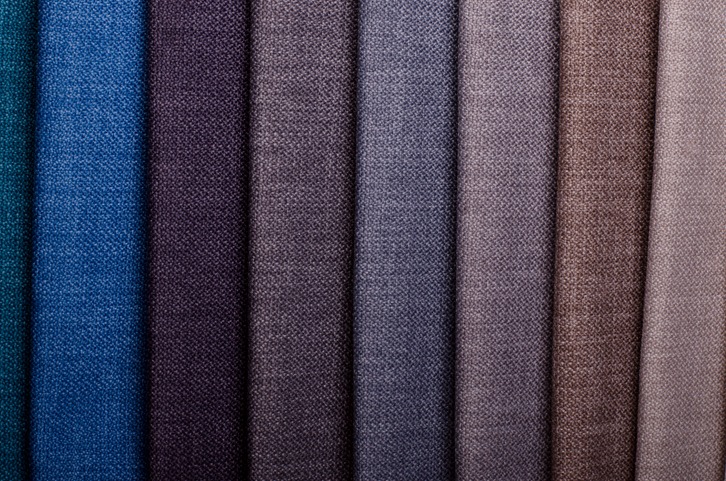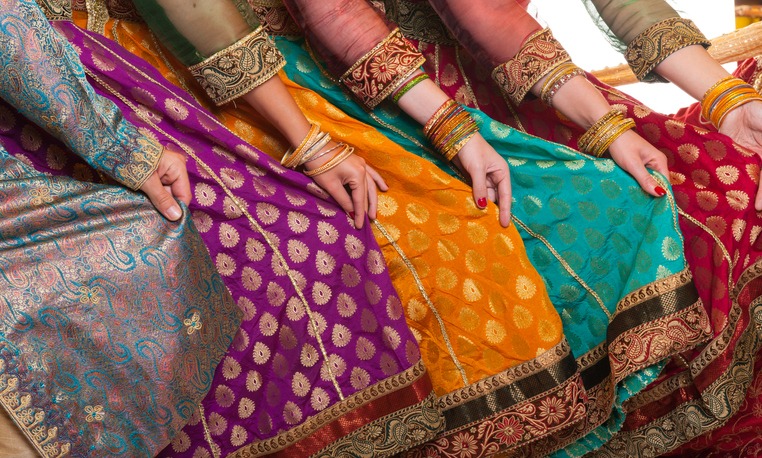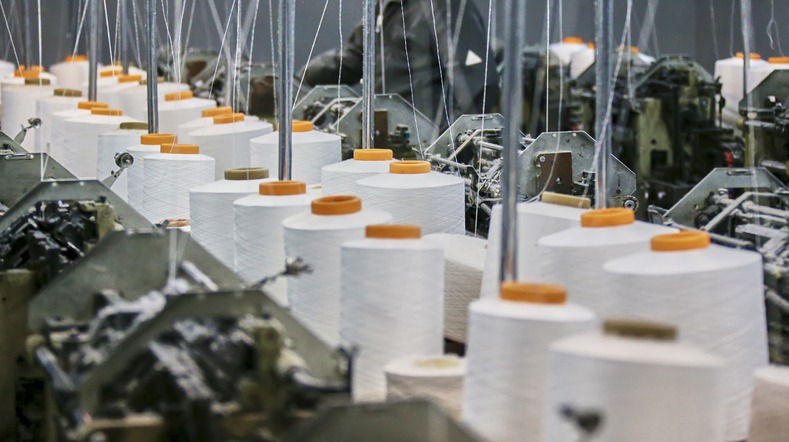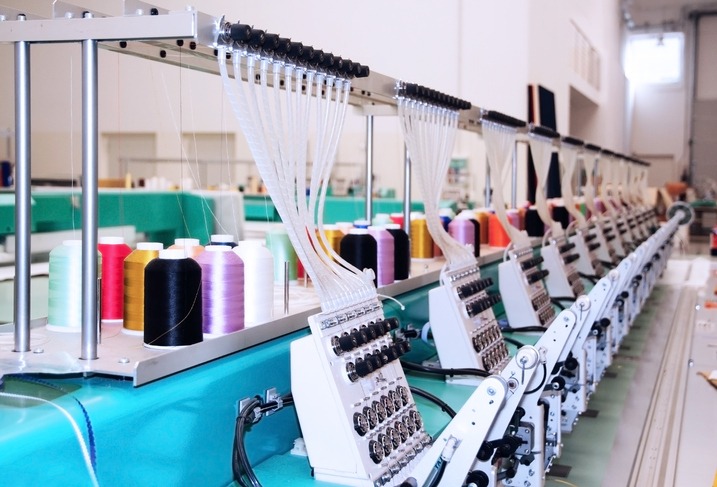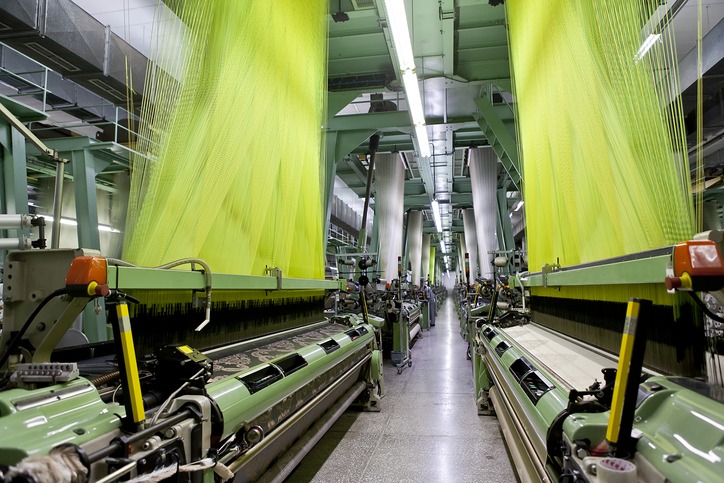Clothing manufacturing is a tale as old as civilization itself. Throughout history, the way we produce garments has evolved dramatically, reflecting changes in technology, society, and aesthetics. From the early days of hand-spinning and weaving to the modern era of automated factories, the journey of clothing manufacturing is a fascinating story of innovation, cultural exchange, and economic development.
Early History of Clothing Manufacturing
Prehistoric and Ancient Times
The earliest forms of clothing manufacturing were deeply intertwined with the very survival of prehistoric people. They primarily used materials readily available in their environment, such as animal hides, fur, leaves, and grass. These materials were often simply wrapped or tied around the body, with minimal processing or alteration.
Natural Materials: Early humans utilized leather and fur extensively, which provided essential warmth and protection. The process of turning animal hides into leather was a significant early innovation. This involved scraping, drying, and sometimes smoking the hides to make them durable and wearable.
Early Textile Production: As humans settled into agricultural societies, the cultivation of plants like flax and the domestication of wool-bearing animals led to the development of textiles. Spinning was one of the first complex manufacturing processes developed by these early societies. It involved twisting fibers together to make them stronger and longer. Weaving followed, where these spun fibers were interlaced to form fabrics. Dyeing, using natural dyes extracted from plants, minerals, and insects, was also an important process, adding color and variety to textiles.
Ancient Civilizations
The ancient civilizations of Egypt, China, and the Indus Valley brought remarkable innovations in clothing manufacturing. They not only mastered the art of textile production but also contributed significantly to the variety and quality of fabrics.
Egyptian Innovations: In ancient Egypt, linen was the textile of choice. Made from the flax plant, linen was ideal for the hot, dry climate. Egyptians became highly skilled in spinning and weaving linen, creating fine, lightweight fabrics that were prized throughout the ancient world. Mummification practices led to advancements in textile production, as linen was used to wrap mummies, demanding high-quality, durable fabrics.
Chinese Silk Production: China’s contribution to clothing manufacturing was revolutionary with the development of silk. The process of silk production was a closely guarded secret for centuries. Sericulture, the cultivation of silkworms, and the extraction of silk from the cocoons, was a labor-intensive process that produced a luxurious and highly sought-after fabric. The Silk Road trade routes facilitated the spread of silk, and the techniques for its production, across Asia and Europe.
Indus Valley Cotton and Wool: The Indus Valley civilization (modern-day Pakistan and northwest India) was known for its cotton textiles. They developed advanced techniques for spinning and weaving cotton, creating fabrics that were comfortable in the hot, dry climate of the region. The use of cotton spread from the Indus Valley to Egypt and Europe. Wool was also used, with evidence of woolen textiles dating back to this period.
The Middle Ages and the Renaissance
This period in the history of clothing manufacturing marked significant advancements in both the technology and the social significance of textiles. The rise of guilds, the evolution of spinning and weaving technologies, and the role of clothing in defining social status and identity were all pivotal during this era.
The Rise of Guilds and Artisan Workshops
Guilds: During the Middle Ages, the formation of guilds had a profound impact on clothing manufacturing. Guilds were associations of artisans and craftsmen that established standards for their trades, regulated competition, and protected trade secrets. In cities across Europe, guilds played a crucial role in the textile industry, overseeing the quality and commerce of products like wool, silk, and linen.
Artisan Workshops: With the guild system, artisan workshops became the center of textile production. These workshops were often family-run businesses where skills were passed down through generations. Artisans specialized in various stages of the production process, from spinning and weaving to dyeing and finishing. The workshops not only ensured the high quality of the textiles but also fostered innovation in techniques and designs.
Technological Advancements in Spinning and Weaving
Spinning Innovations: The Middle Ages saw significant improvements in spinning. The introduction of the spinning wheel in the 12th century, possibly from India or China, revolutionized the process. It was more efficient than the spindle and allowed for the production of finer, more consistent yarn.
Advancements in Weaving: Weaving also saw advancements. The horizontal treadle loom, which allowed weavers to use their feet to operate the loom while freeing their hands to pass the shuttle, was a significant development. It increased efficiency and allowed for more complex patterns and designs in fabric.
The Role of Clothing in Social Status and Identity
Clothing as a Status Symbol: In the Middle Ages and the Renaissance, clothing became an important indicator of social status. Laws called sumptuary laws were enacted in various European countries to regulate what different classes could wear. This was a period where extravagant clothing, often made of luxurious materials like silk and adorned with jewels and fur, was reserved for the nobility.
Fashion and Identity: The Renaissance era saw an explosion of fashion as a form of personal expression. This period witnessed the rise of tailored garments that fitted the body more closely, a departure from the flowing robes of earlier times. Clothing styles began to change more rapidly, influenced by cultural interactions across Europe and with the East due to trade and exploration.
Industrial Revolution and its Impact
The Industrial Revolution, which began in the late 18th century, marked a seismic shift in clothing manufacturing. It transformed the industry from a small-scale, handcrafted operation into a machine-driven, mass production one. This period was characterized by groundbreaking inventions, a significant shift in production methods, and profound socioeconomic implications.
Inventions that Revolutionized the Industry
The Spinning Jenny: Invented by James Hargreaves in 1764, the spinning jenny was a pivotal development. It allowed a single worker to spin multiple spindles of thread simultaneously, greatly increasing yarn production. This invention was a key factor in the shift towards industrialization in textile manufacturing.
The Power Loom: The power loom, developed by Edmund Cartwright in 1785, mechanized the process of weaving cloth. This invention dramatically increased the speed and efficiency of fabric production. By the early 19th century, power looms had been widely adopted in factories, marking the transition from hand weaving to machine weaving.
Shift from Handcrafted to Machine-Made Clothing
Mass Production: The adoption of machines like the spinning jenny and the power loom allowed for the mass production of textiles. This shift meant that clothing could be produced faster, in larger quantities, and more consistently in terms of quality.
Changes in Manufacturing Locations: Prior to the Industrial Revolution, textile production was often a cottage industry, with artisans working from their homes. The advent of machines led to the establishment of factories, centralizing production and dramatically altering the landscape of the textile industry.
Socioeconomic Implications
Urbanization: The rise of factories as centers of textile production contributed to urbanization. Workers moved from rural areas to cities in search of factory jobs, leading to the growth of urban centers and a shift in the population distribution.
Labor Movements: The factory system introduced a new labor dynamic, with long hours, low wages, and poor working conditions. This led to the rise of labor movements, as workers began organizing to demand better conditions, fair pay, and shorter working hours. These movements were instrumental in shaping modern labor laws and practices.
Changes in Fashion: The ability to mass-produce textiles and garments led to changes in fashion. Clothing became more affordable and accessible, leading to a democratization of fashion. It also meant that fashion trends could spread more quickly and widely, laying the groundwork for the modern fashion industry.
20th Century Developments
The 20th century was a period of rapid advancement and significant change in the field of clothing manufacturing. This era saw the rise of mass production, the introduction of synthetic fibers, and the impact of global events such as the World Wars on clothing styles and production methods.
Mass Production and the Rise of Global Fashion Brands
Scaling Up Production: The early 20th century continued the trend of mass production. Advancements in manufacturing technology and the establishment of assembly line techniques, inspired by Henry Ford’s automotive factories, allowed for the production of clothing at a scale never seen before.
Global Fashion Brands: This period also saw the birth and rise of major global fashion brands. Companies like Levi Strauss & Co., which was founded in the 19th century, became household names. They standardized sizes and popularized certain styles, such as blue jeans, which became iconic worldwide. The proliferation of global brands was facilitated by advances in marketing, advertising, and a growing consumer culture.
Introduction of Synthetic Fibers and New Materials
Synthetic Fibers: The development of synthetic fibers was a groundbreaking innovation of the 20th century. In 1935, nylon was invented by Wallace Carothers at DuPont, revolutionizing the textile industry. It was followed by other synthetics like polyester, acrylic, and spandex. These fibers had several advantages over natural fibers, including durability, elasticity, and resistance to wrinkles and shrinkage.
Innovation in Materials: The 20th century also witnessed innovations in blending natural and synthetic fibers, leading to the creation of new materials with enhanced qualities. These advancements allowed for a wide range of fabric properties, catering to different needs and uses, from sportswear to high fashion.
The Impact of World Wars on Military and Civilian Clothing
Military Developments: Both World Wars had a significant impact on clothing manufacturing, with many factories shifting their focus to producing military uniforms and supplies. This included the development of durable and functional clothing, such as cargo pants and bomber jackets, which were designed to meet the demands of military life.
Influence on Civilian Fashion: The World Wars also influenced civilian fashion. For instance, during World War II, clothing designs became simpler and more practical due to fabric rationing. The utility clothing program in the UK is a notable example, where the government controlled the design of clothes to conserve materials for the war effort. These changes led to a lasting impact on fashion, emphasizing simplicity and functionality.
Modern Clothing Manufacturing
Modern clothing manufacturing is characterized by rapid technological advancements, growing ethical and environmental awareness, and the complex dynamics of globalization and fast fashion. This period marks a significant departure from traditional manufacturing methods, embracing new technologies and grappling with the challenges of sustainability and ethical production.
Current Technologies in the Textile Industry
Automation: The contemporary textile industry heavily relies on automation for various processes, from spinning and weaving to cutting and sewing. Computerized systems control production lines, enhancing efficiency, precision, and consistency. Automated cutting machines and robotic sewing arms are becoming increasingly common, reducing the need for manual labor and accelerating the production process.
3D Printing: A groundbreaking advancement in modern manufacturing is 3D printing, which allows designers to create three-dimensional garments and accessories directly from digital designs. This technology enables the production of complex and intricate designs that would be difficult or impossible to achieve with traditional manufacturing methods. 3D printing is also seen as a way to reduce waste, as it allows for on-demand production without the need for cutting from large pieces of fabric.
Ethical and Environmental Considerations
Sustainable Practices: There is a growing movement within the fashion industry towards sustainability. This includes using environmentally friendly materials, such as organic cotton, bamboo fibers, and recycled polyester. Sustainable practices also encompass the entire lifecycle of a product, from design to disposal, encouraging the development of clothing that is not only durable but also recyclable or biodegradable.
Fair Trade and Ethical Production: Alongside environmental concerns, there is an increasing focus on the social impact of clothing manufacturing. This includes fair labor practices, ensuring that workers in the textile industry receive fair wages, work in safe conditions, and have their rights respected. Fair trade initiatives and certifications are becoming more prominent, as both consumers and brands become more conscious of the ethical implications of their choices.
The Role of Globalization and Fast Fashion
Globalization: The modern clothing industry is highly globalized, with a complex supply chain that spans multiple countries. Raw materials might be sourced from one country, manufactured in another, and sold in a third. This globalization has led to a more interconnected market but also raises challenges related to quality control, transparency, and the environmental impact of shipping goods around the world.
Fast Fashion: A significant trend in the modern era is fast fashion, characterized by rapid production cycles and the continuous introduction of new trends. Brands like Zara, H&M, and Forever 21 exemplify this model, offering the latest fashion trends at affordable prices. While this has made fashionable clothing accessible to a broader audience, it also contributes to a culture of disposability, with significant environmental and social consequences.
Future Trends and Innovations
As the clothing manufacturing industry continues to evolve, it stands on the brink of a new era defined by smart textiles, wearable technology, and sustainable innovations. These advancements promise to not only transform how clothes are made but also how they are used and their impact on the environment.
Smart Textiles and Wearable Technology
Integration of Electronics: The future of clothing includes the integration of smart technology directly into textiles. This could mean embedding sensors, lights, or even small computers into fabrics. For example, clothes could monitor health metrics like heart rate and temperature, change color based on the environment, or even store energy.
E-Textiles: Electronic textiles (e-textiles) are fabrics that enable digital components and electronics to be embedded in them. These could have applications in various fields including sports, healthcare, and fashion. For instance, athletes could wear clothing that tracks their performance and provides real-time feedback.
Innovations in Sustainable Manufacturing
Biodegradable and Eco-Friendly Materials: A major focus in sustainable manufacturing is the development of biodegradable and eco-friendly materials. Researchers are exploring materials like mushroom leather, pineapple fiber, and lab-grown fabrics that mimic silk and leather without the environmental and ethical concerns.
Closed-Loop Systems: Another innovation in sustainability is the implementation of closed-loop systems in manufacturing. These systems aim to recycle all materials and minimize waste, creating a circular economy in the fashion industry. For example, used garments could be broken down into their fibers and re-spun into new textiles.
Predictions for the Future of Clothing Manufacturing
Customization and On-Demand Production: Advancements in technology like 3D printing and AI-driven design tools could lead to a more personalized approach to fashion, where clothes are made to order according to individual preferences and measurements. This would not only reduce waste associated with mass production but also cater to the growing desire for individualized clothing.
Automation and Localized Production: The future might see a shift towards more localized production models, facilitated by automation and AI. Automated micro-factories could be set up closer to the consumer, reducing shipping costs and carbon footprints, and allowing for faster response to market trends.
The Role of AI and Big Data: Artificial Intelligence and big data are expected to play a significant role in future clothing manufacturing. They could be used for everything from predicting fashion trends and optimizing supply chains to personalized customer experiences and managing inventory.
Sustainability as a Standard: It is anticipated that sustainable practices will move from being a unique selling point to a standard expectation in the fashion industry. This would include the use of renewable energy in production, water conservation, chemical management, and the overall reduction of the industry’s carbon footprint.
Conclusion
The history of clothing manufacturing is a compelling narrative marked by continuous innovation, significant cultural shifts, and groundbreaking technological advancements. From its early stages of hand-spinning and weaving to today’s highly automated and technology-driven processes, the evolution of clothing manufacturing has consistently reflected and influenced societal changes.
Reflecting on the industry’s past, we see a clear evolution from using natural materials in prehistoric times to the development of sophisticated fabrics by ancient civilizations. This progression underscores the deep connection between human development and our need for clothing. The Middle Ages and the Renaissance further contributed to this evolution with the introduction of guilds, artisan workshops, and the emergence of fashion as a marker of social status. A pivotal moment in this historical narrative was the Industrial Revolution, which introduced mass production, radically transforming the workforce and the very fabric of society.
In the present era, the clothing manufacturing industry is characterized by a combination of extensive global supply chains and advanced technologies like automation and 3D printing. Alongside these developments, there is a growing consciousness about ethical and environmental concerns. The advent of fast fashion has highlighted issues related to sustainability, prompting a shift towards more responsible manufacturing practices.
Looking towards the future, clothing manufacturing stands on the brink of another significant transformation. Innovations such as smart textiles and wearable technology are expected to redefine the functionality of clothing. The industry is likely to place a stronger emphasis on sustainable and ethical production practices, responding to global environmental challenges and the rising consciousness of consumers. The integration of artificial intelligence, big data, and on-demand production models suggest a future that is more personalized, efficient, and environmentally friendly.
In summary, he journey of clothing manufacturing is a testament to human creativity and adaptability. As the industry progresses, it will continue to be shaped by the lessons of the past, the challenges of the present, and the possibilities of the future. The key will be in finding a balance between technological innovation and ethical responsibility, ensuring that the industry meets consumer demands in a manner that is sustainable for both people and the planet.
The story of clothing manufacturing is ongoing and dynamic, rich with opportunities for innovation and improvement. As we look forward to what the future holds, it is clear that this industry will remain at the forefront of technological and social change, continuously evolving and adapting to the needs of the world it clothes.

